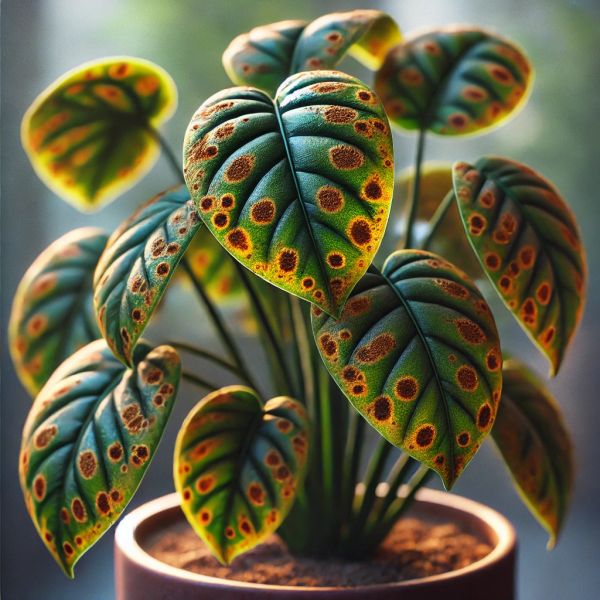Leaf Spots and Discoloration: Causes & Solutions
Noticing dark spots, yellow patches, or strange discoloration on your plant's leaves? Learn how to diagnose and treat common leaf discoloration problems.
Leaf discoloration can be a warning sign of plant health issues, from nutrient deficiencies to fungal infections. Understanding the cause is key to restoring your plant's health.

Disclosure: This content includes affiliate links, which means we may earn a commission if you click on a link and make a purchase. As an Amazon Associate, we earn from qualifying purchases. This comes at no extra cost to you and helps offset the cost of running Leafwise. Please read our disclaimer for more info.
Common Causes of Leaf Spots and Discoloration
1. Fungal Infections (Leaf Spot, Powdery Mildew)
Fungal infections thrive in humid environments and often spread through water droplets.
- Symptoms: Small brown, black, or yellow spots with irregular edges; powdery white coating on leaves.
- How to Diagnose: If the spots spread rapidly and appear fuzzy or powdery, a fungal infection is likely.
-
How to Fix It:
- Remove affected leaves to prevent spread.
- Increase air circulation around the plant. Consider using a small fan to help with air movement.
- Use a fungicide or neem oil to treat the infection.
2. Bacterial Leaf Spot
Bacterial infections often cause dark, wet-looking spots that may spread quickly.
- Symptoms: Dark, water-soaked lesions on leaves, often surrounded by a yellow halo.
- How to Diagnose: Spots often look greasy or mushy and may expand under humid conditions.
-
How to Fix It:
- Prune infected leaves immediately.
- Avoid overhead watering to reduce moisture on leaves.
- Use a copper-based bactericide for treatment.
3. Sunburn or Light Stress
Excessive sunlight can scorch plant leaves, especially in delicate indoor plants.
- Symptoms: White, tan, or bleached patches on leaves, often on the side exposed to the sun.
- How to Diagnose: If the damage appears after sudden sun exposure or relocation, sunburn is the likely cause.
-
How to Fix It:
- Move the plant to a location with indirect light.
- Gradually acclimate the plant to brighter light if needed.
- Trim off damaged leaves if necessary.
4. Nutrient Deficiencies
Plants require specific nutrients for healthy growth. Deficiencies can cause discoloration.
- Symptoms: Yellowing, purpling, or browning leaves depending on the nutrient lacking.
- How to Diagnose: Look for patterns—yellowing between veins (iron deficiency), purpling on older leaves (phosphorus deficiency).
-
How to Fix It:
- Use a balanced fertilizer with essential nutrients.
- Ensure proper soil pH for nutrient absorption.
5. Pest Damage (Thrips, Spider Mites)
Pests can cause leaf discoloration by feeding on plant sap.
- Symptoms: Small yellow specks, webbing, or stippled appearance on leaves.
- How to Diagnose: Check leaf undersides for tiny insects or fine webbing.
-
How to Fix It:
- Rinse the plant with water to remove pests. A gentle garden hose nozzle may assist with this.
- Apply insecticidal soap or neem oil.
- Introduce beneficial insects like ladybugs.
Preventing Leaf Discoloration
- Water Smartly: Avoid overhead watering to prevent fungal and bacterial infections.
- Maintain Airflow: Ensure proper spacing between plants to reduce humidity issues.
- Monitor Light Exposure: Adjust placement to avoid direct sunburn or low-light stress.
- Use Proper Fertilization: Apply balanced nutrients according to plant needs.
Need More Help?
If you're still unsure about what's causing your plant's leaf discoloration, try the Leafwise Plant Health Diagnosis Tool for a personalized assessment.
